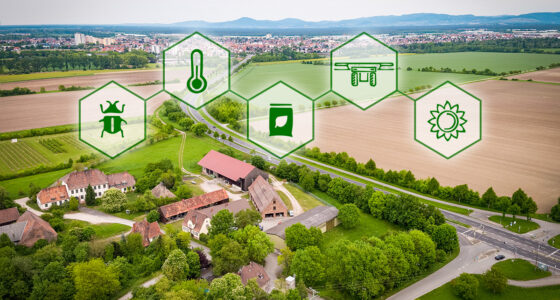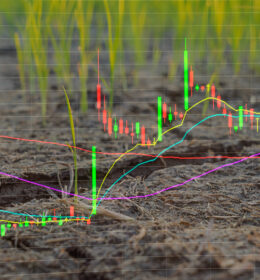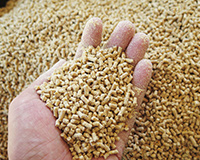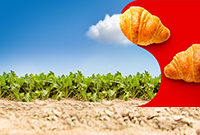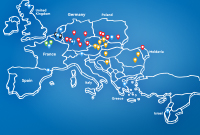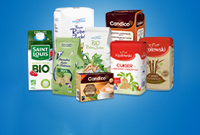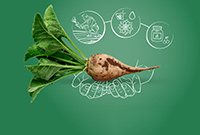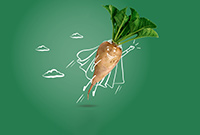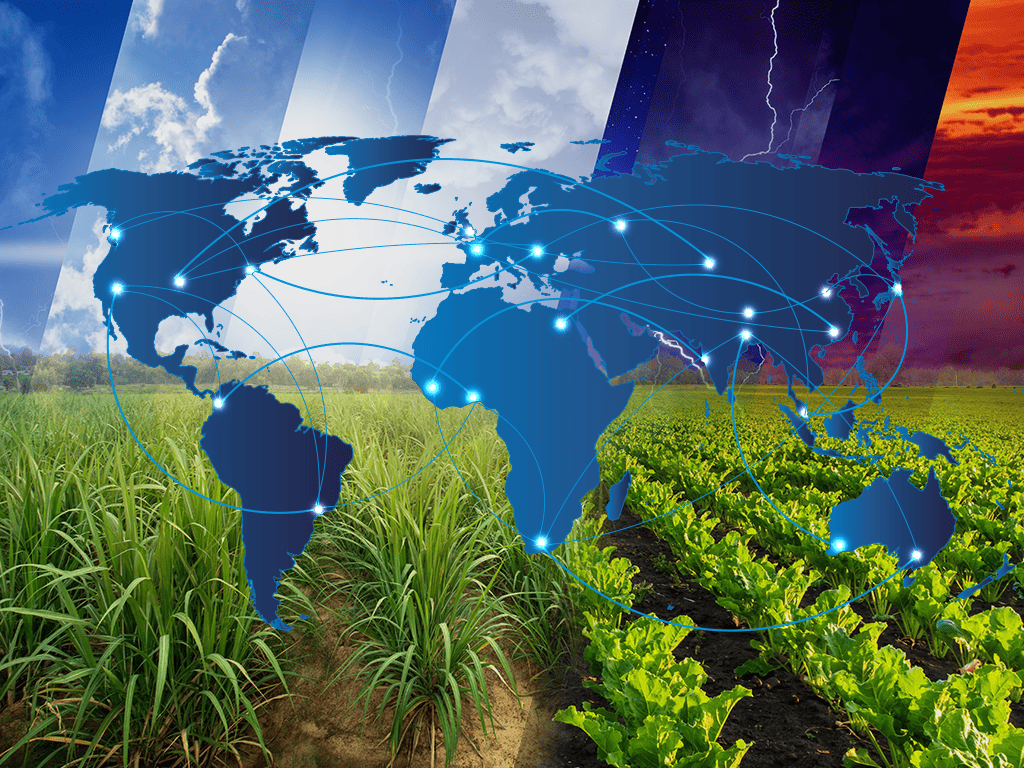
Is the Global Sugar Market Drifting Towards a New Equilibrium?
Guest Article by © Julian Price
The benchmark ICE New York #11 Raw Sugar Futures Contract has remained within a relatively narrow channel around 1½ cents/lb wide after the market rather spectacularly broke above the psychologically important level of 20 cents/lb level on 17 September 2024. However, since reaching a high of 23.71 cents/lb (523 USD/tonne) on 26 September, the market’s range has been steadily falling, with a two-month low of 20.86 cents/lb (460 USD/tonne) seen on 13 November. As we go to print on 19 November, the market has settled at 22.02 cents/lb.
Devastating cane fires raged in São Paolo state in Centre-South Brazil in August 2024. So not surprisingly the weather has remained uppermost in the minds of market participants. Other factors have certainly played their part – lower crude oil prices and a stronger US dollar, for example – but the principal cause of the September rally in the global sugar market was fear that a prolonged drought would further threaten the sugar crop in the Centre/South of Brazil. The drought was seen affecting both the “tail end” of the current crop ending soon, and also next year’s crop beginning in April 2025.
At the same time, it became clear that the Government of India would maintain its ban on sugar exports, and so Indian sugar would not be available to replace lost Brazilian sugar as had been hoped, with global supply/demand tightness seen particularly pronounced in the first quarter of 2025; instead, surplus Indian sugar will be “diverted” to produce bioethanol to fulfil India’s E20 gasoline mandate. Hence a perfect storm in the sugar markets appeared possible, and hence the speculative interest which drove prices above 23 cents/lb. But in October, the weather in C/S Brazil turned significantly wetter – some regions, for example, Belo Horizonte, recorded their rainiest October for a century. The latest statistics published by UNICA have shown C/S Brazilian mills closing for the season earlier than expected; sugar production in the second half of October fell by 24.3% year on year, and the latest estimates have C/S Brazil sugar production falling well below 40 million tonnes in 2024/25.
However, on the other side of the world, the outlook for sugar production in Thailand has improved. In November, Thailand’s Office of the Cane and Sugar Board projected that Thailand’s 2024/25 sugar production will increase by +18% y/y to 10.35 million tonnes. Thailand is the world’s third-largest sugar producer and the world’s second-largest sugar exporter. Prospects for sugar crops in Central America also appear to be improving thanks to better weather there, with Mexico returning to the world market after an absence of several years. In today’s rather becalmed global market, 21 cents/lb appears to be a decent level for buyers of #11 sugar FOB Brazil – these buyers being located mainly in the Far East, notably China and Indonesia, but buyers have been seen retreating to the sidelines when the market reaches up to around 22.5 cents/lb.
The speculative funds went long nearly 3,000,000 tonnes of sugar in mid-September, excited by the prospect of dry weather in Brazil, but as the rains have fallen, so the funds have lost interest in the sugar story and are today around 370,000 tonnes short, without much in the way of bullish or bearish news to apprehend their attention; they have other fish to fry at the moment!
Meanwhile, the so-called “white premium” (the spread between London #5 and New York #11) has fallen, with “March/March” falling from around 100 USD/MT to trade today around 85 USD/MT, although the May/May has remained relatively steady around 110 USD/MT. Clearly, the market seems to be expecting more abundant supplies of white sugar for delivery in March – the peak of the EU exporting season – than in May, although doubtless other factors are also at play.
Hence the global sugar market today seems to be “stuck in a rut” without fresh news.
But that said, new challenges may be looming on the horizon, which could yet lead to a new equilibrium in the sugar markets in the medium to longer term. Firstly, the world economy seems to be “deglobalizing” and more focused today on deepening regional trade blocs, for example, the African Continental Free Trade Agreement (AfCFTA) and the predominantly Asian CPTPP/ASEAN trade agreement, rather than on negotiating global agreements under the auspices of the World Trade Organization. This may be leading sugar producers, traders and investors to further seek “exclusive” regional and preferential trade opportunities rather than producing for a world market which today barely covers increasing production costs, if it ever did.
At the same time, the supplies of sugar which do remain available for delivery to the global market – epitomized by the New York #11 market – are becoming concentrated in a diminishing handful of origins led by Brazil which now dominates the global market to an almost unreasonable degree. All the while, key bottlenecks in global trade routes – the Red Sea and Suez, the Straits of Malacca, and the Panama Canal – are becoming even more vital to maintaining global sugar trade flows, albeit with longer sailing times and increasing disruption.
However, the trade statistics do not yet bear out this thesis of “deglobalization”; they only continue to highlight the increasing dominance of Brazil amongst the largest global sugar exporters. Of the global trade flows since 2022, thirteen of the top twenty trade flows have Brazil as the origin and classic importing countries as the destination, led by Brazil to China, Brazil to Algeria, to Indonesia, to Morocco, to Nigeria, to Egypt and to the UAE, etc. Trade in re-exported Indian sugar is also highly significant, for example India to Djibouti and Somalia and onwards to Ethiopia, and India to Sudan (lately replaced with Brazilian origin sugar). However, the remaining seven of the top 20 trade flows are regional and/or preferential trade flows, led by Thailand to Indonesia and Korea, Mexico to the USA, and Australia to Korea and Japan.
Intra-European trade flows such as France to Italy and Spain, Germany to Switzerland and South-East Europe and Ukraine to Romania and Italy are in the top 50 of the largest annual sugar trade flows. In Africa, the volume of sugar trade from Eswatini to South Africa is in 48th position, and the trade flows from Zambia to DRC, Mauritania to Mali, Mauritius to Kenya, and Cameroon to Chad are also significant. Sugar trade amongst the Commonwealth of Independent States and the “Stans” also remains substantial. Meanwhile, trade amongst India, Bangladesh, Myanmar and Pakistan has been seen increasing in recent months. Further details are available from Trade Data Monitor and Kulea. Will we see a shift away from non-preferential, global trade flows towards larger preferential and/or regional sugar trade flows? Only time will tell.
Secondly, we may see a return to more robust Government intervention in the sugar markets, for example, the Indian management of supplies in pursuit of its ethanol mandate, the ban on sugar imports into Kenya, the increasing cross-subsidy of Brazilian sugar via the Renovabio programme, and lately, President-elect Donald J. Trump’s promise to impose higher US import tariffs on all imports, not to mention the sanctions imposed on Russia. Added to which, the programme to promote sustainability, human rights and good governance in Western trade policy may lead to greater fragmentation of trade, with less responsible players eschewing opportunities in more “demanding” markets for “easier” markets elsewhere in the world.
Lastly, sugar producers are rightly seeking to diversify their portfolio of revenue streams to trap the whole value of whole intrinsic in the cultivation of sugar beet and cane, for example, to chase revenue based on decarbonisation and carbon credits, bioelectricity cogeneration, and a wider portfolio of products including biodegradable packaging, and much else besides.
We can’t yet see a trend in the sugar trade statistics from globalized to regionalized trade flows, but there seem to be good, albeit anecdotal reasons to suspect that this may be occurring. Should we worry about that? Well possibly yes, because the global markets of “last resort” may become more volatile if the theoretically more stable regional and/or preferential markets take an increasing share of global sugar trade flows, and because many market participants have somewhat risky just-in-time food systems which may become more vulnerable to disruption in an increasingly fractured geopolitical world.
Read our Blog “Sugar & Beyond” to find more news on Sugar & the sugar market

